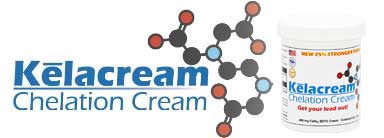A common question: can and does the body absorb chemicals/elements that are applied to the skin?
Usually, one has to dig very deep and spend a lot of time researching to uncover certain truths regarding health…OR rely on those who have already done the digging and present the information in an honest, unbiased, easy-to-understand format as we’ve done here.
When doing research online for EDTA chelation information, you will find a lot of potentially negative (and false) information. Most of this false information is promoted by medically-backed publications like PubMed, WebMD and even Wikipedia.com as well as written publications. Theirs is a simple agenda – vilify alternative treatments to keep people away from treating themselves and have them spend the money on medical treatments. It IS, after all, a business. While it didn’t start out that way over a century ago, medicine in all its forms is a multi-billion dollar business. Therefore, the information that is disseminated on medical websites, commercials and publications will be biased, controlled and spun in a way that will condemn alternative treatments and put modern medical treatments on the pedestal.
That being said, let’s explore a common falsity regarding EDTA absorption and chelation.
MYTH: EDTA is a large molecule and it cannot penetrate through the skin. After all, the skin IS designed as a barrier.
Unfortunately there are many sites claiming that EDTA is not well-absorbed through the skin without backing their statements up with documentation.
In order to clear up the lies from the truth, we need to know a little bit about the largest organ of the human body – the dermis or skin.
Our skin was designed to hold us together and to be our first line of defense from outside elements such as wind, rain, dirt, etc. However, the skin was NOT designed to inhibit absorption of modern chemicals or substances.
One example found on the Internet is regarding the absorption of chlorine from water in our showers, baths, drinking water, pools and hot tubs. Chlorine is used in almost all public water as a means of purification and elimination of bacteria and pathogens. It is a HUGE business and the powers that be would have us believe chlorine is harmless. Even the Wisconsin Department of Health Services made the following statement regarding chlorine absorption: “The body does not absorb chlorine well. However, small amounts can pass through the skin when people are exposed to chlorine gas, chlorine bleach, or bathing in water with high levels of chlorine. Lower levels of exposure can occur when people handle soil or water containing chlorine.”
So, essentially, they are claiming that chlorine absorption is minimal and nothing to worry about.
TRUTH: the following short video will demonstrate that chlorine is not only easily absorbed, but is absorbed abundantly and quickly even through the thicker skin of the hand.
httpss://www.youtube.com/watch?v=qPKE9phMGSg
This should leave no doubt that chemicals ARE absorbed through the skin into the body despite what is being written about non-absorption.
In addition to direct chemical penetration by passing directly through cells via permeation (intracellular), they also make their way into the body between cells (intercellular), or by sneaking in through appendages like hair follicles or sweat ducts (transappendageal). Therefore, there’s even more of a chance of absorption when we consider these additional avenues.
Regarding absorption of beneficial EDTA
We’ve already determined the amazing benefits of EDTA in removing toxic chemicals and artery plaque from the body. However, it does absolutely no good unless it is absorbed through the skin.
Here’s the good news and scientific fact:
It has been determined scientifically that any chemical or compound under 500 Daltons in size is able to penetrate the skin. Larger molecules typically cannot pass through. The most commonly used pharmacological agents applied in topical dermatotherapy are all under 500 Daltons; including all known topical drugs used in transdermal drug-delivery systems.
